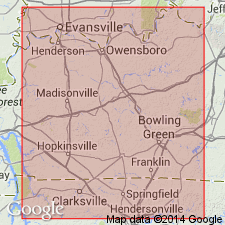
- Usage in publication:
-
- Oregon bed
- Modifications:
-
- Named
- Dominant lithology:
-
- Limestone
- Dolostone
- AAPG geologic province:
-
- Cincinnati arch
Summary:
Named for village of Oregon on south side of Kentucky River, Mercer Co, KY. "...25 to 30 feet of an even bedded limestone, the bottom and top of which are highly magnesian." Underlain by Camp Nelson beds; overlain by Tyrone beds.
Source: GNU records (USGS DDS-6; Reston GNULEX).
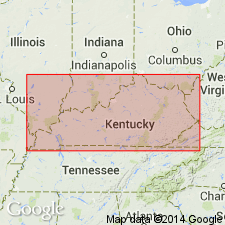
- Usage in publication:
-
- [Oregon limestone]
- Modifications:
-
- Overview
- AAPG geologic province:
-
- Cincinnati arch
Summary:
Pg. 11-12. Oregon [limestone] of High Bridge group. = "Kentucky River Marble" of Linney (Miller, 1905). Gray to cream and buff-colored, granular, magnesian limestone Thickness 15 to 35 feet. Is middle formation of High Bridge (Highbridge) group. Overlies Camp Nelson [limestone] and underlies Tyrone [limestone]. No fossils. Age is Ordovician.
[On p. 12 (footnote) author states correlations have been changed in 1941 ed. of Schuchert and Dunbar's Historical Geology (John Wiley and Sons). Formations of the High Bridge placed in the Mohawkian; extend from upper Black River into lower Trenton. Camp Nelson along with the Oregon placed in upper Black River and correlated with the Lowville and Chaumont, respectively, of the New York section. The Tyrone was removed from the Lowville and placed at base of the Trenton (Rockland). In subsequent years, these correlations were adopted by most geologists; see also 1954 Correlations of the Ordovician Formations of North America, GSA Bull., v. 65.]
Source: Publication; US geologic names lexicon (USGS Bull. 1200, p. 2848); GNC index card files (USGS-Reston).
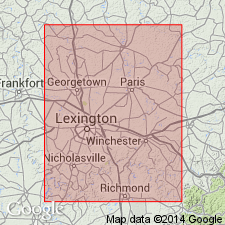
- Usage in publication:
-
- Oregon limestone
- Modifications:
-
- Revised
- AAPG geologic province:
-
- Cincinnati arch
Summary:
Raised in rank to Oregon limestone of Highbridge group. "...probably ranges from about 15 to 35 feet in thickness ...cream to buff in color and in many places shows gray or black banding parallel to the bedding...a finely crystalline magnesian limestone." Underlain by Camp Nelson limestone; overlain by Tyrone limestone.
Source: GNU records (USGS DDS-6; Reston GNULEX).
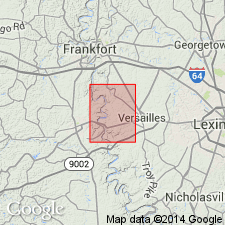
- Usage in publication:
-
- Oregon Limestone*
- Modifications:
-
- Overview
- AAPG geologic province:
-
- Cincinnati arch
Summary:
Revised spelling of High Bridge (Highbridge) used. Designated Oregon Limestone of High Bridge Group.
Source: GNU records (USGS DDS-6; Reston GNULEX).
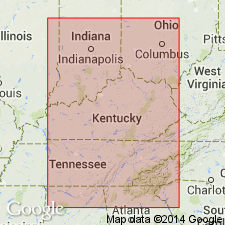
- Usage in publication:
-
- Oregon Formation*
- Modifications:
-
- Overview
- AAPG geologic province:
-
- Cincinnati arch
Summary:
The Oregon Formation of the High Bridge Group in KY consists of finely crystalline dolomite that is interbedded with micritic limestone. The upper and lower contacts of the formation are placed at the base of the lowest dolomite bed and the top of the highest dolomite bed, respectively. Fossils include crinoids, bryozoans, brachiopods, ostracodes, and tabulate corals. Thickness is 6 to 65 feet. Overlies the Camp Nelson Limestone and underlies the Tyrone Limestone. Unit is interpreted to contain peritidal, shallowing upward cycles. The Oregon is of Middle Ordovician age.
Source: GNU records (USGS DDS-6; Reston GNULEX).
For more information, please contact Nancy Stamm, Geologic Names Committee Secretary.
Asterisk (*) indicates published by U.S. Geological Survey authors.
"No current usage" (†) implies that a name has been abandoned or has fallen into disuse. Former usage and, if known, replacement name given in parentheses ( ).
Slash (/) indicates name conflicts with nomenclatural guidelines (CSN, 1933; ACSN, 1961, 1970; NACSN, 1983, 2005, 2021). May be explained within brackets ([ ]).

